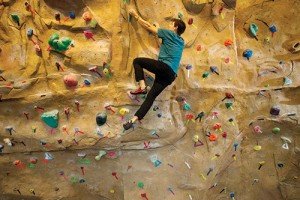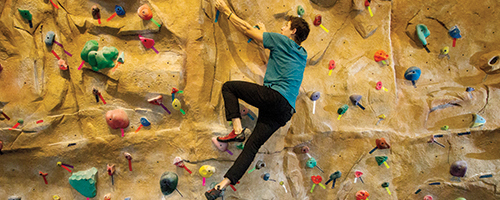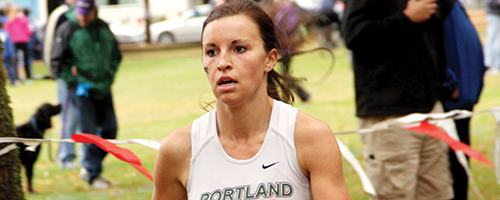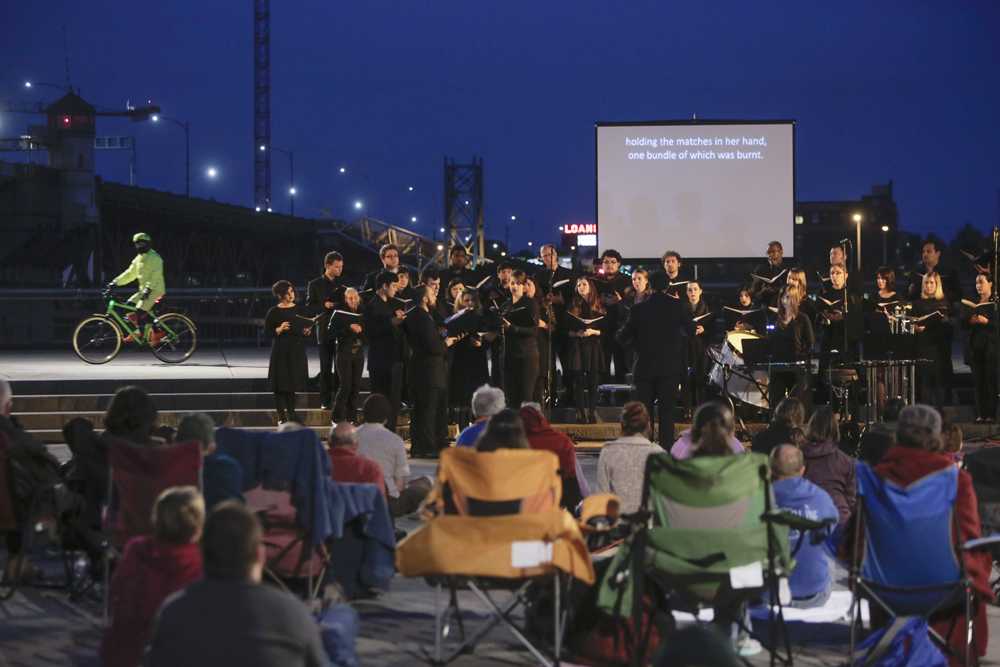My first experience indoor bouldering was ridiculous. I felt completely out of shape. My fingers burned, my forearms swelled and my shoulders ached. I grew blisters in places on my hands I didn’t think could blister. Unlike traditional top-rope rock climbing, bouldering doesn’t use any safety ropes. I watched other climbers skitter up the walls like Spiderman while I clung to the holds like Mary Jane awaiting rescue.
Ascending new heights
My first experience indoor bouldering was ridiculous. I felt completely out of shape. My fingers burned, my forearms swelled and my shoulders ached. I grew blisters in places on my hands I didn’t think could blister. Unlike traditional top-rope rock climbing, bouldering doesn’t use any safety ropes. I watched other climbers skitter up the walls like Spiderman while I clung to the holds like Mary Jane awaiting rescue.

karl kuchs/VANGUARD STAFF
On the rocks: Louis Henry scales the wall at the PSU rec center. Aspiring and accomplished climbers alike are welcome.
But as a former surfer, I knew that no activity worth doing comes easily, so I kept going back. Before I knew it, my body felt lighter. I moved with finesse along the wall and found a Zen-like focus to ease my mind. Other climbers in the gym would cheer me on, and the sense of community was overwhelming.
“It’s challenging on so many levels,” Circuit Bouldering Gym member Bjorn Vanberg said. “There’s the strength requirement to hold on, balance to keep your weight distributed, flexibility, endurance—and it is also a mental challenge, planning how you will tackle the route.”
It requires dedication, however, and there are three things you will experience when you first start climbing that will make you want to quit.
First, you will feel weak. No matter how much you can bench press, rock climbing will make you feel like a Tyrannosaurus rex climbing a rope in gym class—heavy, inept and utterly graceless.
Second, you will feel fear. Most people, even adventurous ones, are afraid of the heights they dangle from on their maiden attempts. I have a grossly intense fear of heights that used to paralyze me—I still don’t like being in tall buildings—but rock climbing has allowed me to take control of my fear by placing my safety in my own hands in a very literal way.
Last, you will fall. People will see you fall, and you will feel embarrassed. It is this component of rock climbing that I find the most intimidating but also the most motivating. Unlike schoolwork or team sports, you cannot make excuses or lay blame on others for your mistakes. Rock climbing is all on you, even if you have someone beneath you holding the ropes to your harness.
But if you manage to fight past these three obstacles, rock climbing will become one of the most challenging and gratifying sports you’ve ever experienced. I have brought every one of my friends with me at least once, and more than half of them have become addicted.
“You can challenge yourself and your friends in a noncompetitive, chill environment,” Portland State student Kelly Flynn said. “And the benefits are more than just physical—climbing and bouldering teach you that when you’re tired, lost and want to give up, the best thing to do is to stop, remember to breathe and look at the big picture.”
In Portland, the indoor rock climbing scene is huge. The Circuit Bouldering Gym is one of the largest bouldering–only gyms in the country, and they have locations in Northeast and Southwest Portland. The Portland Rock Gym at East Burnside Street and 12th Avenue offers both bouldering and top-rope climbing. If you are a PSU student, the Academic and Student Rec Center has its own rock climbing wall that you can climb for free. The rec center also offers bouldering, top-rope climbing, free shoe rental, lessons and a weekly beginner’s night.
Whether you top-rope climb or boulder, rock climbing will challenge your body and help you build confidence in a way that few other sports can. I asked first-time climber Mike Mayaudon how he felt after ascending his first route.
“That was hard,” he said. “I want to do it again!”







